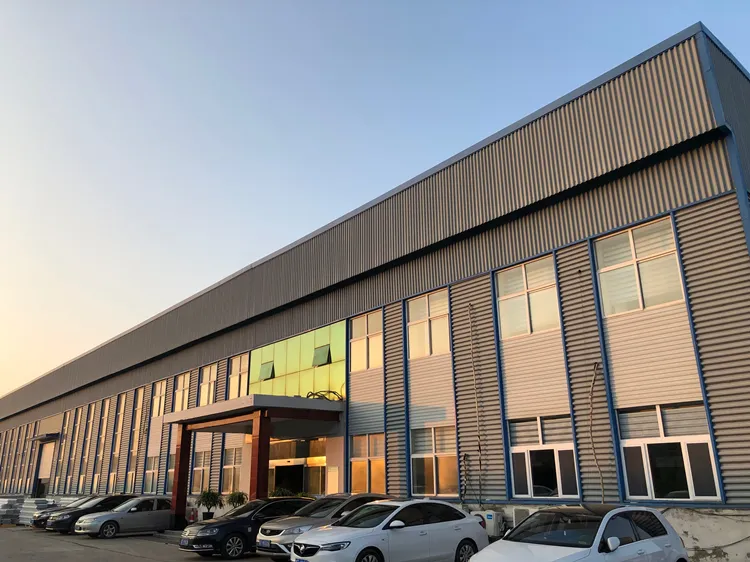loading...
- No. 9, Xingyuan South Street, Dongwaihuan Road, Zaoqiang County, Hengshui, Hebei, China
- admin@zjcomposites.com
- +86 15097380338
- Welcome to visit our website!
frp bar
Understanding FRP Bars A Revolutionary Solution in Construction
Fiber Reinforced Polymer (FRP) bars have emerged as a revolutionary solution in the construction industry, providing unique benefits that significantly enhance the durability and performance of structures. As engineers and architects strive to find alternatives to traditional materials, FRP bars are garnering increased attention due to their remarkable strength-to-weight ratio, corrosion resistance, and versatility.
What Are FRP Bars?
FRP bars are composite materials made from a combination of fibers, typically glass, carbon, or aramid, embedded in a polymer matrix. This unique construction grants FRP bars their exceptional properties, enabling engineers to utilize them in various applications. Unlike traditional steel reinforcement bars (rebar), FRP bars do not corrode, making them ideal for environments prone to moisture, chemicals, and other harsh conditions.
Key Advantages of FRP Bars
1. Corrosion Resistance One of the most significant advantages of FRP bars is their resistance to corrosion. This characteristic is especially valuable in coastal areas or regions where de-icing chemicals are used on roads. By eliminating the risk of corrosion, structures can achieve a longer lifespan with reduced maintenance costs.
2. Lightweight The lightweight nature of FRP bars makes them easier to transport and handle during construction. This feature not only speeds up the installation process but also reduces the overall weight of the structure, allowing for design flexibility and potentially lowering foundation costs.
3. High Strength and Durability FRP bars have a high tensile strength, making them suitable for various applications, including bridges, parking garages, and precast concrete products. Their durability ensures that structures can withstand heavy loads and extreme weather conditions without compromising safety.
4. Non-Magnetic and Non-Conductive FRP bars are non-magnetic and non-conductive, making them ideal for applications in sensitive environments, such as near electrical equipment or in MRI rooms. This characteristic ensures that magnetic interference does not occur, preserving the integrity of sensitive operations.
frp bar

5. Design Flexibility The versatility of FRP bars allows engineers to design innovative structures with complex shapes and configurations. This flexibility opens new avenues in architectural design, enabling the construction of aesthetically pleasing structures that meet modern engineering demands.
Applications of FRP Bars
FRP bars are becoming increasingly prevalent in various construction applications. They are commonly used in
- Bridge Construction FRP bars offer enhanced durability and lower maintenance needs, making them an excellent choice for long-span bridges. - Marine Structures In marine environments, where exposure to saltwater can lead to significant corrosion of traditional materials, FRP bars provide a reliable solution ensuring longevity and performance. - Parking Garages The resistance to corrosion and lightweight nature of FRP bars makes them an ideal choice for parking structures, where these attributes lead to reduced repair and maintenance costs. - Precast Concrete Products FRP bars enhance the performance of precast concrete products, ensuring they meet stringent structural requirements without the drawbacks associated with traditional rebar.
Challenges and Considerations
Despite their many advantages, FRP bars also come with certain challenges. The cost of FRP materials can be higher than traditional steel, which may deter some budget-conscious projects. Additionally, proper design practices and guidelines must be followed to ensure that FRP systems perform as intended, given that the material exhibits different failure modes compared to steel.
Conclusion
Fiber Reinforced Polymer bars represent a significant advancement in construction materials, offering unique properties that address many challenges faced by traditional materials. Their corrosion resistance, lightweight nature, and design flexibility make them an attractive choice for modern engineering applications. As technology continues to evolve and more studies validate their performance, FRP bars are set to become a standard component in future construction projects, contributing to safer, more sustainable, and longer-lasting structures. Embracing these innovative materials will undoubtedly shape the future of the construction industry, paving the way for advancements that align with the demands of contemporary infrastructure.
-
The Rise of FRP Profiles: Strong, Lightweight, and Built to LastNewsJul.14,2025
-
SMC Panel Tanks: A Modern Water Storage Solution for All EnvironmentsNewsJul.14,2025
-
GRP Grating: A Modern Solution for Safe and Durable Access SystemsNewsJul.14,2025
-
Galvanized Steel Water Tanks: Durable, Reliable, and Ready for UseNewsJul.14,2025
-
FRP Mini Mesh Grating: The Safer, Smarter Flooring SolutionNewsJul.14,2025
-
Exploring FRP Vessels: Durable Solutions for Modern Fluid HandlingNewsJul.14,2025
-
GRP Structures: The Future of Lightweight, High-Performance EngineeringNewsJun.20,2025
